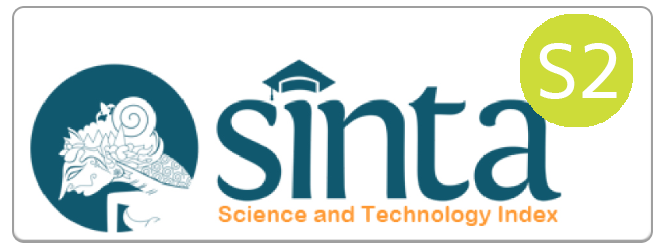Criminal Policy Toward the Crime of Defamation in Cyberspace Through the Use of Deepfake AI
Abstract
Currently, humanity is experiencing rapid advancements in science and technology. Information and communication technology has undergone significant developments, particularly with the emergence of Artificial Intelligence (AI). This progress has ushered in the digital era, where people interact in cyberspace through social media platforms that utilize AI. While the use of AI in social media brings positive impacts by enhancing interactions in cyberspace, it also presents the potential for cybercrimes, including defamation through AI-based technology known as Deepfake. Several notable cases of defamation using Deepfake AI have occurred, such as the case of Raffaela Spone in the United States, who sent defamatory Deepfake content targeting members of the Victory Vipers cheerleading team; the manipulated video of Ukrainian President Volodymyr Zelenskyy; the Deepfake video of Indian actress Rashmika Mandanna wearing revealing clothing; and cases involving manipulated Deepfake videos of Indonesian public figures such as Prabowo Subianto, Gibran Rakabuming Raka, and Sri Mulyani. In Indonesia, there is still a lack of clear regulation concerning defamation through the use of Deepfake AI and how to address such crimes through criminal policy. This study aims to examine efforts to combat cyber defamation using Deepfake AI by applying both penal and non-penal criminal policy approaches. The research employs a normative juridical method, using secondary data sources and deductive analysis. The findings show that efforts to address the crime of cyber defamation using Deepfake AI can be implemented through penal policy using formulation strategies, and through non-penal policy by eliminating criminogenic factors contributing to cyber defamation with Deepfake AI. Penal policy countermeasures can be pursued under Law No. 11 of 2008 in conjunction with Law No. 19 of 2016, specifically Article 27 paragraph (3). Non-penal approaches involve the use of Deepfake AI detection technologies, protection of digital identities, digital literacy education, and the enhancement of personal data security.
Keywords
Full Text:
PDFReferences
Journals:
Frensh, W. (2022). Kelemahan Pelaksanaan Kebijakan Kriminal Terhadap Cyberbullying Anak Di Indonesia. Indonesia Criminal Law Review, 1(2), 87–99.
Kasita, I. D. (2022). Deepfake Pornografi: Tren Kekerasan Gender Berbasis Online (KGBO) Di Era Pandemi Covid-19. Jurnal Wanita Dan Keluarga, 3(1), 16–26. https://doi.org/10.22146/jwk.5202
Melani, M., Disemadi, H. S., & Jaya, N. S. P. (2020). Kebijakan Hukum Pidana Dibidang Transaksi Elektronik Sebagai Tindak Pidana Non-Konvensional. Pandecta Research Law Journal, 15(1), 111–120. https://doi.org/10.15294/pandecta.v15i1.19469
Pokhrel, S. (2024). Pelindungan Hukum bagi Korban Deepfake Pornografi (Studi Perbandingan Indonesia dan Korea Selatan). In Αγαη (Vol. 15, Issue 1).
Rana, S., & Nobi, M. N. U. R. (2022). Deepfake Detection : A Systematic Literature Review. IEEE Access, 10, 25494–25513. https://doi.org/10.1109/ACCESS.2022.3154404
Rizki Kurniarullah, M., Nabila, T., Khalidy, A., Juniarti Tan, V., Widiyani, H., Hukum Universitas Maritim Raja Ali Haji Abstrak, I., & Kunci, K. (2024). Tinjauan Kriminologi Terhadap Penyalahgunaan Artificial Intelligence: Deepfake Pornografi dan Pencurian Data Pribadi. Jurnal Ilmiah Wahana Pendidikan, 10(10), 534–547. https://doi.org/10.5281/zenodo.11448814
Yuri S.E Pratiwi, V., & Ravena, D. (2022). Kebijakan Restorative Justice terhadap Tindak Pidana Pencemaran Nama Baik di Media Sosial. Bandung Conference Series: Law Studies, 2(1), 1–9. https://doi.org/10.29313/bcsls.v2i1.284
Books:
Dolhansky, B., Bitton, J., Pflaum, B., Lu, J., Howes, R., Wang, M., & Ferrer, C. C. (n.d.). The DeepFake Detection Challenge (DFDC) Dataset.
Hukom, R., Setiadi, M. H., Ambon, U. D., Ambon, K., Padjadjaran, U., Bandung, K., Barat, J., Info, A., Media, S., Fraud, D., Enforcement, L., & Framework, R. (2025). Pengaruh Media Sosial terhadap Pola Kejahatan di Era Digital: Studi Kriminologi dengan Pendekatan Netnografi. 3(1), 750–768. https://doi.org/10.51903/perkara.v3i1.2353
Informasi, T. (n.d.). Teknologi informasi.
Penanggulangan, K., Cyber, K., April, H., & Bu, Y. (2023). CRIME PENCEMARAN NAMA BAIK DI RUANG SIBER ( Studi Kasus Di Direktorat Reserse Kriminal Khusus Subdit V Cyber Crime Polda Sumut ) SKRIPSI OLEH : HENNY APRIL YANTI BU ’ ULOLO UNIVERSITAS MEDAN AREA FAKULTAS HUKUM ( Studi Kasus Di Direktorat Reserse Kriminal Khusus Subdit V Cyber SKRIPSI Diajukan Sebagai Salah Satu Syarat Untuk Memperoleh Gelar Sarjana Di Fakultas Hukum Universitas Medan Area.
Wang, X. (n.d.). DeepFake Disrupter : The Detector of DeepFake Is My Friend. 14920–14929.
Westerlund, M. (2019). The Emergence of Deepfake Technology : A Review.
DOI: https://dx.doi.org/10.30659/akta.v12i2.44884
Refbacks
- There are currently no refbacks.
Copyright (c) 2025 JURNAL AKTA

This work is licensed under a Creative Commons Attribution-NonCommercial-NoDerivatives 4.0 International License.
Jurnal Akta has been indexed by:
Editorial Office: Jurnal Akta Room 2nd Floor Imam As Syafei Building Faculty of Law Universitas Islam Sultan Agung. Jln. Kaligawe KM. 4, Semarang City, Central Java, Indonesia. Phone +62 24 6583584 Fax +62 24 6582455
Email: jurnalakta@unissula.ac.id














